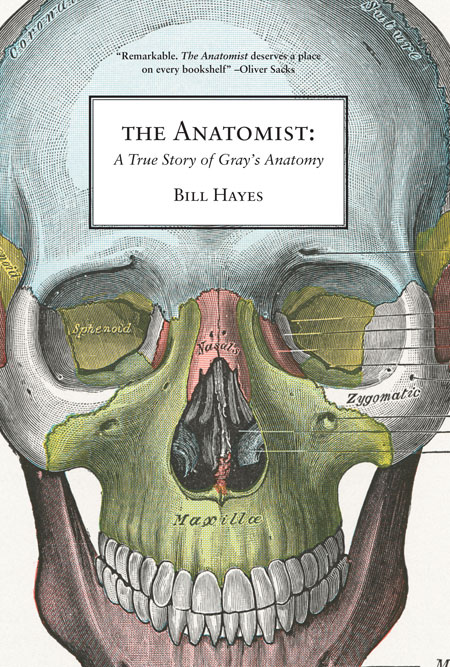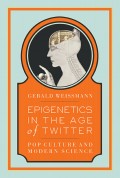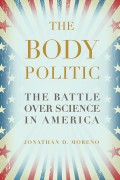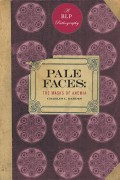“A wonderful writer, Bill Hayes tells the multi-layered story of the two extraordinary young men who produced the most famous medical text of all time—a turning point in medical history, and a continuing influence and inspiration for artists, doctors and anatomists a century and a half later. Part memoir, part biography, part guided tour into the marvels of the human body, The Anatomist deserves a place on every bookshelf. And if you do not already have a copy of Gray’s Anatomy, Bill Hayes’s remarkable account will surely inspire you to get one.”
Oliver Sacks, author of Musicophilia
-
on
“Hayes searches for the elusive man behind the great reference work and his own scalpel’s-eye tour of the human body.”
The New York Times Book Review
( link)-
on
“All laud and honor to Hayes. In perusing the body’s 650 muscles and 206 bones, he has made the case that we are…’fearfully and wonderfully made’ and that dissection has an aesthetic all its own.”
The Washington Post
( link)-
on
“Hayes moves nimbly between the dour streets of Victorian London…and the sunnier classrooms of a West Coast university.”
The New Yorker
( link)-
on
“One of those rare authors who can tackle just about any subject in book form, and make you glad he did.”
San Francisco Chronicle
( link)-
on
“With prose both lucid and arrestingly beautiful . . . Hayes pays eloquent tribute to two masterpieces: the human body and the book detailing it.”
Publishers Weekly
( link)-
on
“Some of [Hayes’s] most memorable writing describes the dissection classes he attended in San Francisco. We are treated to a selection of fascinating anatomical snippets…”
Nature
( link)-
on
The classic medical text known as Gray’s Anatomy is one of the most famous books ever created. Now acclaimed science writer and master of narrative nonfiction Bill Hayes has written the fascinating, never-before-told true story of how this seminal volume came to be. Uncovering a treasure trove of forgotten letters and diaries, Hayes traces the triumphs and tragedies of these two extraordinary men: the fiercely gifted young anatomist Henry Gray and his younger collaborator H. V. Carter, whose exquisite anatomical illustrations are masterpieces of art and close observation. Hayes also chronicles his year as a student of classical gross anatomy, performing with his own hands the dissections and examinations detailed by Henry Gray 150 years ago. As Hayes’s acquaintance with death deepens, he finds his understanding and appreciation of life deepening in unexpected and profoundly moving ways. A blend of history, science, culture, and Hayes’s own personal experiences, The Anatomist is this author’s most accomplished and affecting work to date.
Excerpt from The Anatomist
I found nothing on the jacket flap but his first and last names, Henry Gray. There was no “About the Author” page in the back of the book. Curious, I checked an encyclopedia and other reference sources at home. Still nothing. Surely there must be a biography of the man, I thought, as I logged on to the public library’s online catalog. Alas, “No matches found.” So, too, said Amazon as well as those usually trusty procurers of the obscure, the International League of Antiquarian Booksellers, which struck me as odd. Gray’s Anatomy is widely considered one of the most famous books in the English language and is the only medical text most people know by name. Gray’s has been cited as a major influence by figures ranging from fitness icon Jack LaLanne to the artists Jean-Michel Basquiat and Kiki Smith. Fascinating “biographies” have been written about every- thing from the number zero to the color mauve, yet there is not one on Gray. Can he simply have gone unnoticed by historians, been taken for granted, as he had by me till now?
Well, no, there was a far more reasonable explanation: when trying to piece together the life of Henry Gray, the unknowns simply outnumber the knowns. What I discovered through additional digging at local libraries, in fact, is that surviving records are more extensive about his father.
Thomas Gray, born in Hampshire, England, in 1787, was a private messenger to King George IV, a position in which he was entrusted to carry the most sensitive of documents, including, one can assume, the love letters sent back and forth between George and Maria Anne Fitzherbert, the king’s secret, illegal, and Roman Catholic wife. Thomas Gray later served in the same capacity for George’s successor, William IV, which suggests that he possessed a remarkable ability to be discreet and inconspicuous—a trait that he seems to have passed on to his son. To this day, it is not known where or when exactly Henry Gray was born. The year 1825 has been suggested, but 1827 is generally more agreed upon. Similarly, where he spent his earliest years is uncertain. Some historians cite London while others suggest Windsor, England, while others, connecting imaginary dots, say the lad was raised in Windsor Castle, a commoner among royalty, which is an enchanting notion but nevertheless wrong. When Henry was around three years old, Thomas Gray moved his family—wife Ann and Henry and his three siblings—into a house near Buckingham Palace, but the address itself, No. 8 Wilton Street, is the only verifiable fact of his boyhood. It is almost as if Henry Gray did not fully exist as a flesh-and-blood being until the sixth of May 1845, the day he stepped inside London’s St. George’s Hospital and signed his name to the register as a medical student.
From this point forward, one can retrace his path by way of exams passed, awards won, and scientific papers published, all of which are noted in official records. Among the major milestones: Gray received the equivalent of an M.D. in 1848, and four years later, at the precocious age of twenty-five, he was elected a Fellow of the Royal Society, an exclusive group of scientists that had counted Isaac Newton and Antoni van Leeuwenhoek among its members. Still, I found it maddening that I could not scrape together more. While I had long since missed my chance at a medical career, I’d begun to hope I could make a contribution to the field as Henry Gray’s biographer. But what I had gathered about him thus far would amount to little more than a CV. No anecdotes or reminiscences about him seemed to have survived. His rise through the ranks of St. George’s is marked merely by the titles and dates of his positions, as if the man, like one of his book’s drawings, were just a neatly tagged specimen: postmortem examiner (1848), curator of the Anatomical Museum (1852), lecturer in anatomy (1854), and so forth.
Critically praised author was added to the list in 1858. Anatomy, Descriptive and Surgical, as Gray’s tome was originally titled, received excellent reviews, sold well, and was picked up by an American publisher the following year, by which point he was already working on a revised and enlarged second edition. In what came as a complete surprise to me, however, Gray did not create any of the book’s nearly four hundred signature anatomical drawings. These were the work of another Henry, one Henry Vandyke Carter, whose contribution was not even credited in the 1901 American edition of the book that I own. While this revelation raised a slew of new questions, others were put to rest when I learned how Henry Gray’s story ended: On Wednesday, June 12, 1861, he was scheduled to appear before the board of governors of St. George’s Hospital. As one of three finalists for a prestigious surgical position, he was expected to make a brief statement on his own behalf. But he never showed up. And word eventually reached the panel as to why. Henry Gray had died that very same day. When all the details emerged, it turned out that he had contracted smallpox while treating his young nephew who was suffering from the disease. Ten-year-old Charles Gray recovered and went on to live into his fifties, but Henry, who had been vaccinated against smallpox in childhood, died at his family’s longtime home, one week after falling ill. He was thirty-four years old.
At the time of his death, Gray reportedly had completed a substantial portion of a major new book, though this unfinished manuscript has never turned up. Even the original manuscript and drawings for Gray’s Anatomy have disappeared (most likely, I learned, they had gone up in flames when a fire decimated the British publisher’s archives the year Gray died). I probably would have left it at that— my curiosity about Henry Gray more than satisfied, my dream of contributing to medical history properly deferred—had I not come across one last thing: a photograph included in the one hundredth–anniversary edition of his Anatomy.
Taken fifteen months before his death, the photo shows Gray and two dozen young men grouped in what looks like a large art studio, with a high vaulted ceiling and drawings pinned to the walls. Sun- light pours down through the banks of skylights. Some standing, some seated, many of the young men have on long white smocks over their suits and ties—one even sports a beret—yet they wear uniformly solemn expressions, as if bearers of grim diagnoses. None is more serious, though, than Henry Gray. He is seated on a stool in the foreground, next to one of several low tables. A diminutive man with dark, deep-set eyes and thick, wavy hair, he looks like a pint-sized Heathcliff. Brooding and intense, he stares at the camera, waiting the long seconds for the shutter to close. This is, of course, a class photo, and no one holds the pose better than the cadaver lying just to Henry Gray’s right. Poking out from under a covering, its pale, narrow feet protrude over the table’s edge.
I could not get this picture out of my head: the spacious chamber bathed in daylight; the dead body on the table, its upper half sliced off by the picture’s edge; and, most of all, the anatomist himself. Something about the look on Gray’s face seized my imagination in a way that I can only compare—odd as this may sound—to love at first sight: an overpowering desire to get to know this man as thoroughly as possible. My course of action then seemed perfectly clear: I would come to know Henry Gray by coming to know human anatomy.












